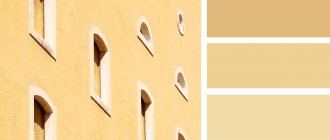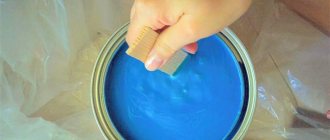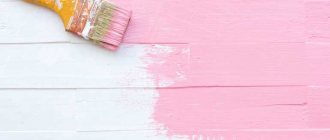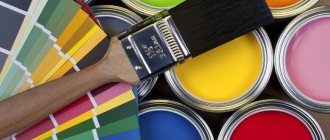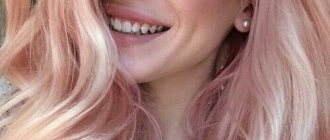plasticine
It turns out that plasticine can be mixed in the same way as paints.
I want to give you a couple of tips right away:
- You should not mix more than three colors, as you will end up with a lump of an indeterminate color.
— By adding a little black, we achieve a darker shade of the original plasticine.
— By mixing colored plasticine with white, you get lighter shades - pastel colors.
- After kneading the pieces of plasticine well, roll them into one roller.
— Fold the resulting roller into pieces and roll it out again.
- Repeat this procedure - rolling and folding in half until a uniform color is obtained.
- You can also deliberately not mix until the end, then you will have a marble effect, so to speak.
Example for clarity
And now in numbers:
The intensity of the shade can be adjusted by taking a different color ratio.
Orange = 1/5 red + 4/5 yellow;
Green = 4/5 yellow + 1/5 blue;
Light green = 1/2 green + 1/2 yellow; (for grass)
Light green = 2/3 green + 1/3 yellow; (for leaves, if you add another 1/5 of white, you can use it to sculpt young leaves)
Purple = 2/3 red + 1/3 blue; (you can use more blue)
Pink = 1/5 red + 4/5 white;
Beige = 1/6 red + 4/6 white + 1/6 yellow;
Brown = 1/5 red + 3/5 yellow + 1/5 black;
Source
Mixing acrylic-based materials
Candy color palette and types of compositions, how to use for a car
Designers love acrylic paints the most. They are very easy to work with, and the finished coating has excellent water-repellent properties. Their use has several nuances:
The working surface must be perfectly flat and smooth
To do this, it needs to be sanded. It is important that the paint does not dry out. To obtain an opaque color, use undiluted paint. Conversely, you can add a little water for transparency. To be able to quickly select the desired color, it is recommended to use
Thanks to it, the product will not dry out so quickly. Use the edge of the brush to distribute the paint. Mixing is best done with a clean instrument. In this case, the colors should be directed towards each other. To make a light tone, you need to add white dye to the solution, and to get a dark one, add black. It is worth remembering that the palette of dark colors is much wider than light ones.
Here are some examples of mixing acrylic-based paints:
- Apricot color is obtained by mixing red, yellow, brown and white.
- The recipe for making beige paint involves combining brown and white. If you want a bright beige, you can add a little yellow. For a light beige shade you will need more white.
- Gold is the result of mixing yellow and red colors.
- Ocher is yellow and brown. By the way, it is considered popular this season.
- Khaki can be made by mixing green dye with brown.
- To get purple you need three different colors: red, yellow and blue.
Special black
In drawing, this tone is used quite often, so many people are familiar with the fact that it has many shades. If you don’t have the appropriate color scheme at hand, you can create it by mixing existing paints. In this case, most likely, it will turn out dark with one or another tint.
The classic tone is obtained by mixing red, blue and yellow, but you can use not only these colors of the palette. The use of complementary paints will help create one or another shade of dark. A juicy and deep color is obtained by mixing brown and blue.
Black is one of the three basic colors that perfectly absorbs light, unlike white. If we compare it with natural materials, Vantablack carbon has similar properties: it absorbs almost 100% of the radiation that hits it. In ancient times it was believed that it was impossible to reproduce natural coal.
For your information! The matte black tone was obtained using soot from burnt bones. Currently, natural pigments are also used - soot and graphite.
What colors must be mixed to get black?
What colors must be mixed to get black?
- red+blue+green=black
- easy gray and brown, mix for a long time until black or just mix dark colors for a very long time and you will get black
when mixing yellow, magenta and cyan dyes
5 proportions of red, 1-3 blue will be a little blue or a little red, then add a little yellow 0.5-1.
I had a case when I ran out of black paint in the watercolor “Leningrad”, so I still learned how to get black by mixing two colors (I don’t remember the exact names): this is purple, and it seems dark green.
If we talk about mixing colors. Mixing paints of three primary colors of blue (cyan), yellow and purple (magenta) or any first-order color with an additional second-order color (spectral yellow + spectral violet, for example). But this can only be done in the theory of subtractive synthesis with ideal colors (in a mathematical model, that is). In practice, this is not possible due to the physicochemical properties of dyes.
In printing, when three primary colors are mixed, a dirty brown color is obtained, and to obtain black and its shades, additional paint (in English Key) is used - translucent black. Deep dense black is obtained by mixing all 4 colors.
Special black dyes are used in painting: black mars and soot and all the many shades of dark brown.
In projectors and monitors, black means no signal and therefore no light. (but this is already additive synthesis - mixing light rays of different wavelengths, where the sum of all the colors of the spectrum gives white)
In printers this is done by mixing yellow magenta and cyan (or red green and blue)
You need to mix all the colors
in painting - red, yellow and blue. In printing (for printing presses) - cyan, magenta and yellow. But then it turns out unsaturated black, grayish. A certain percentage of black color is usually added to it. Hence the CMYK palette
To get black color, you need soot. But mixing all colors, or individual ones, will not achieve the black effect.
Soot is amorphous carbon, a product of incomplete combustion or thermal decomposition of hydrocarbons under uncontrolled conditions. It is used in large quantities to prepare black paint in the printing and paint industries.
Mixing plasticine colors with white or black
When we need plasticine of a lighter shade than we already have, then white plasticine comes to the rescue. We mix it with color.
White color is universal. It can be mixed with any other color.
Try it out for yourself. Take 2-3 pieces of colored plasticine and combine each with white.
In the first case, add less white. It is worth introducing more into the second piece of white plasticine. And so on.
As a result, each time we will get lighter and lighter shades of the main color.
I think it’s clear how to make the main color darker. In this case, we add black plasticine to the colored plasticine.
In this case, there should be less black plasticine than colored plasticine.
Method One: Making Brown from Orange and Blue
If you want a lighter shade of brown, add a little more yellow. Learn what secondary colors are. Secondary colors are created by mixing two primary colors. You can get brown with colored pencils or crayons, but the best way to mix colors is with paints.
In painting, the desired color can be obtained in different ways. For example, put the paint in its pure form without mixing with others, or get the desired color by mixing two or more paints. As a result, cracking of the colorful painting layer may occur. The color obtained from mixing may change - gray, darken.
However, as a result of chemical interaction, the resulting color darkens after some time. Yellow, red and blue colors cannot be obtained by mixing any paints. At the same time, when mixed with each other or mixed with other paints, they give an extremely wide variety of color combinations. So, if you mix green with purple or with orange, which has a reddish tint, then the resulting color will approach achromatic.
How to get beige paint color for a realistic flesh tone?
Rules and features of mixing two or more colors
By adding red you can achieve a special shade. With a light tone, you want to achieve a realistic look. To do this, scarlet is introduced into the mixture in small doses. It is very capable of changing the tint palette of colors, so you need to be careful with it. In most cases, believable flesh requires a large dose of red. But you also don’t need to overdo it, otherwise you’ll end up with the color of sunburned skin.
You can always adjust the resulting color. In the light version, color correction should be done using scarlet and blue, but if it doesn’t work, then the actions require returning to the starting point. Then, within one palette, it is better to make several options in order to ultimately choose the one that suits you.
This video shows how to make skin color from paints.
How to get medium beige paint color?
For the combination, you again need certain tubes or jars of paint. You will need a lot of them:
- Red.
- Blue.
- Yellow.
- Burnt umber.
- White.
- Natural sienna.
A small drop from each container must be applied to the tablet. The first to be combined are scarlet and sunny, which together will provide an orange tint. After dipping and rinsing the brush, add a drop of heavenly. For a darker shade, you can add black. A little scarlet again
Its addition is done in small portions with care and scrupulousness. Next, on the side, separately from the resulting mixture, you need to combine equal parts of burnt umber and natural sienna
A concentrated mixture of a dark shade should result from such mixing. It is introduced in small parts to the main one. This combination is also used when there is no blue. You can get olive color by adding two more colors: green and sunny.
You need to mix this amount of paint until the desired result is achieved. Ideally, there should be several such examples so that the most suitable one can be selected.
How to get a beige color from gouache, and not only so that it is dark?
The experimental part in this variation is the key to success, and the more there is, the more likely it is to get the desired shade! You will need the following paints:
- Purple.
- Burnt umber.
- Natural sienna.
- Red.
- Yellow.
Drops of paints from the list are applied one after another onto the palette. The shade is based on burnt umber and natural sienna. Scarlet and solar are immediately mixed separately in equal proportions. After the manipulations, the second is carefully added to the first mixture. Then purple is introduced. It will be best if it is dark, or you can make it so by adding gray or black to it. When working with black paint, you should know that you need to add it very carefully, otherwise it can ruin the work. Then the general mixing occurs rhythmically and continuously.
A warmer shade is achieved by replacing purple with burnt umber. It is necessary to extract a small amount of the desired mixture on the palette and add it to the main one. A combination of the main mass and orange will give a similar result. Its ability to brighten, giving a natural look, deserves the highest praise. But you should forget about white here: it will dilute the existing range.
How to get beige color from plasticine?
Even cartoon plasticine characters on the screen have realistic skin color. How to achieve it by combining colors and which ones should be used?
You need to purchase the following bars for modeling:
- White.
- Dark pink.
- Light pink.
- Yellow.
- Coral or orange.
Most of all you will need white - the entire bar, all the rest - about 5% of the total weight of the bar, and only dark pink in the amount of 3%. The process itself requires perseverance. It is necessary to separate the necessary parts from the main mass, except for white, and use your fingers to bring the material to the desired temperature to simplify the mixing process. Then introduce all the parts and continuously achieve mixing using simple movements: crushing and kneading the piece.
This video talks about how to achieve skin color. Don't forget to leave your questions, suggestions and comments on the article.
Color models and color synthesis
Scientists have “derived” two main color models that allow you to create all kinds of tones and shades. Color synthesis involves the use of one of the models:
- RGB, or additive. It involves the superposition of light rays on top of each other in a certain order, with a set intensity. The main range of colors fits into the standard (basic) ones - red, blue and yellow. Additive synthesis is used in monitors, but it will not be possible to make black in the same way as the others. Black, according to RGB, is the absence of reflection.
- CMYK, or subtractive. All tones are obtained by mixing paints physically. Black is created by adding all other tones, and white in this system is the absence of color. This model is used in printing, its main colors are cyan (blue), yellow, magenta (magenta).
What colors should you mix to get black?
Black and white colors are also commonly called the absence of color as such. If you need to get black by mixing other colors, then this can be done by mixing three colors - magenta, yellow and cyan.
You can get black by mixing red and green. However, in this case the color will not be 100% black.
If you need to get black from other paint colors, then you will need only three colors for this, namely:
There are also two more paints that, when mixed, will produce black: red and green. The only thing is that the color is not quite black, but very close to it.
If there are no paints with black color, and you need it right now, then black color can be obtained by mixing paints of other colors. In order to get black, you need to mix colors such as blue, red and yellow. From these three popular paint colors we get the desired black color.
In order to get black , one color, we need to have as many as three others: cyan, yellow and purple.
- If you mix only blue and yellow, you get green
- yellow + magenta gives us red
- mix magenta and cyan to get blue
- Well, we get black if we mix all these three colors.
If you mix red, blue and green in equal proportions, you will get a pure black color, but it will not be saturated.
If you need black color in paints for painting, then you can make it yourself. To do this, take activated carbon (in tablets) and dissolve it in vodka.
This is how you can get black paint for painting.
If you are faced with the need to get black by mixing different shades of paint, then to get black you will need to mix three colors, which are:
1) Purple color;
3) And blue color.
And here's the mix:
To get black, you can mix all the colors you have except white, white will turn black into gray. You can also mix red and green, or you can also mix yellow, magenta and cyan.
Using additive color mixing (RGB model), black can only be obtained with zero intensity of all three components. This mixing of colors is a matter of taste. Using subtractive color mixing (CMYK model), black color, theoretically, is obtained by mixing components C, M, Y with maximum intensities. What you get in practice is very different from black, so in practice blacK is added to the colors Cyan, Magenta and Yellow - a rich black color.
Color models and mixing rules
You can make black from paints; this is the so-called subtractive model, when the components are physically mixed. It is used in printing. There is an additive model for creating tone, based on the superposition of rays that are reflected from other objects. This system is used in computer graphics.
The options for which colors to mix to make black are as follows:
- Green, red;
- Blue, red, yellow;
- Blue, brown, purple.
You can use almost any paint, regardless of the commercial purpose. At the same time, it is worth understanding that a pure color scheme cannot be obtained by mixing other tones; upon closer examination, some shade will always be noticeable. The result is close to natural, but nothing more.
Advice! The saturation and hue are selected by trial. To do this, additional colors are mixed in the palette in different proportions. The most realistic is the dark color of yellow, purple and blue.
Shades of black
The classic result is difficult to achieve in real conditions, but it is possible to play with shades of black. Artists especially love to do this; various undertones are actively used to give originality to their works. The following shades can be distinguished:
- Slate. Very dark gray, slate was used to create it, which is why the color got its name;
- Anthracite. Shiny and rich, unlike the classic matte, it looks bright;
- Bardadym. This is what the black king was called in the card deck.
Currently, charcoal is classified as soft, medium and rich shades.
Soft comes out when a small amount of white color is added to the standard mixture of pink, turquoise and yellow. The middle shade will be obtained by mixing ultramarine, yellow and pink. It would seem that such strange combinations give unexpected results. A tone close to the traditional one can be obtained by mixing opposite colors, which are located opposite each other on the color wheel. These are green and red, blue and orange, purple and yellow.
Interesting! You can get black color by mixing all the primary colors of the palette. By adding white diluted with water, you can vary the shades of gray.
Now all you need is a palette of paints, a brush and the desire to experiment. Because only through experience can you find out what shades are obtained by mixing certain colors in different proportions.
What colors should I mix?
To get a black color close to ideal, you can go by mixing paints of the following colors:
- Red and green - the resulting tone will be close to the desired one (in fact, it turns out to be very dark, and if you look closely, it is not quite ideal).
- Blue, yellow and red - if you take these 3 primary colors, then mixing them will also allow you to get a fairly rich color scheme.
- Additional colors (brown, purple, blue) - you need to mix them in small quantities, then you will get an approximate color.
You can use any paints intended for painting or household purposes for mixing: acrylic, gouache, watercolor and oil. If there is no ready-made dye of a classic tone, then there are a lot of options on how to make black paint from others.
To obtain a pure color, you will have to work hard and select the necessary proportions, gradually adding different colors.
On the video: what colors to mix to get black.
Universal tables [edit | edit code]
The table below is used in various fields of art, not only in sculpting:
| Example | Required Color | Base Color + Mixing Instructions |
| Pink | White + add a little red | |
| Chestnut | Red + add black or brown | |
| Royal red | Red + add blue | |
| Red | Red + White to brighten, yellow to get orange-red | |
| Orange | Yellow + add red | |
| Gold | Yellow + a drop of red or brown | |
| Yellow | Yellow + white for lightening, red or brown for a dark shade | |
| Pale green | Yellow + add blue/black for depth | |
| Grass green | Yellow + add blue and green | |
| Olive | Green + add yellow | |
| Light green | Green + add white/yellow | |
| Turquoise green | Green + add blue | |
| Bottle green | Yellow + add blue | |
| Coniferous | Green + add yellow and black | |
| Turquoise blue | Blue + add a little green | |
| White-blue | White + add blue | |
| Wedgwood blue | White + add blue and a drop of black | |
| Royal blue | Blue + add black and a drop of green | |
| Dark blue | Blue + add black and a drop of green | |
| Grey | White + Add a little black | |
| Pearl gray | White + Add black, a little blue | |
| Medium brown | Yellow + Add red and blue, white for lightening, black for dark | |
| Red-brown | Red & yellow + Add blue and white to brighten | |
| Golden brown | Yellow + Add red, blue, white. More yellow for contrast | |
| Mustard | Yellow + Add red, black and a little green | |
| Beige | Take brown and gradually add white until you get a beige color. Add yellow for brightness. | |
| Off white | White + Add brown or black | |
| Pink gray | White + Drop of red and black | |
| Gray-blue | White + Add light gray plus a drop of blue | |
| Green-gray | White + Add light gray plus a drop of green | |
| Gray coal | White + add black | |
| Lemon yellow | Yellow + add white, a little green | |
| Light brown | Yellow + add white, black, brown | |
| Fern green color | White + add green, black and white | |
| Forest green color | Green + add black | |
| Emerald green | Yellow + add green and white | |
| Light green | Yellow + add white and green | |
| Aquamarine | White + add green and black | |
| Avocado | Yellow + add brown and black | |
| Royal purple | Red + add blue and yellow | |
| Dark purple | Red + add blue and black | |
| Tomato red | Red + add yellow and brown | |
| Mandarin, orange | Yellow + add red and brown | |
| Reddish chestnut | Red + add brown and black | |
| Orange | White + add orange and brown | |
| Burgundy red color | Red + add brown, black and yellow | |
| Crimson | Blue + add white, red and brown | |
| Plum | Red + add white, blue and black | |
| Chestnut | Yellow + red, black and white | |
| Honey color | White, yellow and dark brown | |
| Dark brown | Yellow + red, black and white | |
| Copper gray | Black + add white and red | |
| Eggshell color | White + yellow, a little brown |
Combining paints to produce charcoal
If you read manuals for beginning artists, you can find instructions everywhere: no combination of paints will give a 100% black tone. But there are tables with information about what paints need to be mixed to create the darkest possible shade, close to black.
The easiest way involves combining red, blue and yellow paints. Gouache and oil are best suited, but watercolor will be too transparent and will not provide the necessary depth. Any basic set of paints will do, although artists often use cyan, magenta, cadmium yellow, royal blue and alizarin red.
- place a drop of each paint on a white palette (take an equal amount of all colors) at a short distance from each other;
- gently mix the colors with a brush or spatula;
- Mix the materials for at least 15 seconds so that there are no veins, using circular movements.
If you need to lighten the black a little, add a drop of white paint into it. To give the tone of a natural sky, add a drop of blue or violet pigment. To draw a night forest, add a little green to black, and to draw the rays of the sun on a dark surface, add a little orange. Of course, the expressiveness of such blackness will be less; for a rich tone it is better to buy a ready-made color in the store.
There are other methods for obtaining the desired color:
- red + green;
- purple + brown;
- blue + orange;
- purple + yellow;
- blue + brown.
All the resulting tones will be close to black, but not ideal; upon closer inspection, it is easy to identify a “fake”. In the first option, it is better to take red alizarin and emerald. But the finished color can still have a shade of one of them or become olive, purple, or brown.
According to artists, the best color is obtained by mixing blue and brown paint, regardless of its brand and specific type. Moreover, the more brown, the “warmer” the blackness will be. On the contrary, blue greatly “cools” the finished color. Diluting this color with water gives an excellent gray tone.
Shades of black
Professionals highlight a lot of shades of the darkest dye. Not so long ago, artists designated the following tones:
- slate (with an admixture of gray);
- anthracite (with shine);
- ox blood (mixed with red).
Nowadays, colorists and artists create completely different colors; their range has expanded significantly. With the introduction of different colors, the charcoal will not be so dark, but brownish, bluish or with a hint of purple. Many shades are obtained by adding white. Here are some interesting dark tone variations:
- soft coal - to create it, mix turquoise, pink, yellow, add a drop of ready-made black;
- medium coal - combines ultramarine, reddish, light yellow, adds a little black;
- black and blue - combine brown and blue, and the second color should be 2 times larger.
Mixing paints is easy, and experimenting is always fun. In practice, you can select the necessary proportions to create the required color scheme for a drawing - even a schoolchild can do this.
”
How to make a light brown color from paints, gouache when mixed?
To get a light brown color, you need to give the yellow color a predominance. But! Let us repeat that too much of it will make the color look like ocher. And, of course, it all depends on the desired lordship.
- To whiten the brown color, you need to add white
. Yes, it's that simple. The more you add, the lighter the final color will be. - But don’t overdo it, brown is a warm color and white will neutralize this characteristic. Therefore, introduce very carefully, gradually and in small portions (literally, 1% of the total mass of paints).
- Although adding the previous color will help correct the situation.
Source
How to dye your hair peach color
Depending on whether it is monochromatic or complex coloring, different techniques are used. The base on which the composition will be applied is also of great importance.
Important! Peach shade is easier to achieve for natural blondes. Dark-haired people will have to bleach their natural or dyed hair
You can change your image using permanent ammonia paint of the desired shade, direct dye, coloring balm, tinted shampoos, tinting mousse, spray and even jelly. Similar products can be found both in the budget segment and in the professional line of products.
Peach hair dye: brands and numbers
To achieve peach color, it is best to turn to professionals. Colorists will be able to create the desired shade by mixing, “diluting” the color with correctors.
If you can’t go to a salon, you can get a bright shade, like in the photo, at home. If we talk about professional products, these are paint Kapous 904, 10.34, 9.3, as well as Estel 9.34, Igora ROYAL COLORIST'S 9.5 -18 (pastel pink), Color Craving - Keune peach mist, Revlon Professional 004, Siena Acme-Professional 9.34.
The most common products include L'oreal Prodigy 8.34 Sandalwood, 822 Strawberries with cream, COLORISTA (Peach hair), Got2be tint spray from Schwarzkopf in the shade Pastel Apricot.
This video shows hair coloring with L`oreal Colorista.
Budget options include Tonic in shade 8.53. With it you can get a cool peach color.
